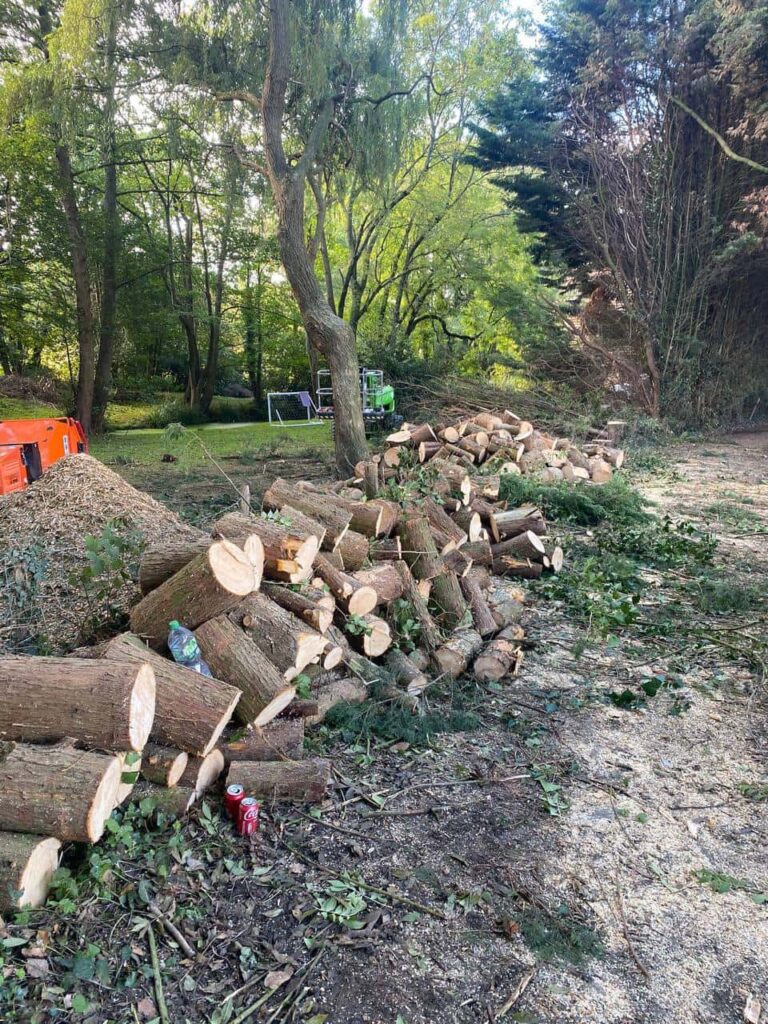Introduction: Tree pruning is an essential aspect of tree care that helps maintain trees’ health, shape, and aesthetics. Whether you’re a homeowner looking to improve the appearance of your landscape or a novice tree enthusiast eager to learn the ropes of tree maintenance, this comprehensive guide from Bury St Edmunds Tree Surgeons will provide you with the fundamental knowledge you need to get started with tree pruning.
1. Why Prune Trees?
Tree pruning serves several purposes, including:
- Safety: Removing dead or hazardous branches can prevent accidents and property damage.
- Health: Pruning can improve a tree’s health by removing diseased or infested branches.
- Aesthetics: Pruning enhances a tree’s appearance and shape, adding beauty to your landscape.
- Airflow and Light: Thinning the canopy can improve air circulation and allow more sunlight to reach the tree and surrounding plants.
2. When to Prune
Pruning should ideally be done during the dormant season, typically in late winter or early spring. However, dead or hazardous branches can be removed at any time of the year. Avoid pruning in late summer or early fall, as it can stimulate new growth that may not have enough time to harden before winter.
3. Basic Pruning Techniques
- Deadwood Removal: Identify and remove dead, dying, or diseased branches. These can be potential safety hazards and should be eliminated.
- Thinning: Thin the tree’s canopy by selectively removing branches to improve air circulation and reduce crowding. Always maintain the tree’s natural shape.
- Raising the Canopy: Remove lower branches to create clearance for pedestrians, vehicles, or structures.
- Reduction Pruning: Reducing the length of branches can help balance the tree’s shape and reduce the risk of breakage in heavy winds.
4. Tools for Pruning
Invest in high-quality pruning tools, including:
- Pruning Shears: For small branches and twigs.
- Loppers: For thicker branches.
- Pruning Saw: For larger branches.
- Pole Pruners: For high branches in tall trees.
5. Pruning Techniques
- Make Clean Cuts: Use sharp tools to make clean cuts that heal more efficiently.
- Cut at the Right Place: Make cuts just outside the branch collar, the swollen area where the branch meets the trunk.
- Avoid Tearing: Cut from the bottom of the branch first, then the top, to prevent tearing.
- Don’t Overprune: Avoid removing more than 25% of a tree’s foliage yearly to avoid stress.
6. Safety Precautions
Safety is paramount when pruning trees. Wear protective gear, including gloves, safety glasses, and a helmet if working at heights. Always be aware of your surroundings and the potential for falling branches.
7. Seek Professional Help When Needed
While basic pruning tasks can be done by homeowners, larger trees or extensive pruning may require the expertise of a professional tree surgeon. They have the necessary equipment and experience to handle complex pruning jobs safely and effectively.
Conclusion: Tree pruning is valuable for anyone interested in tree care and landscaping. By following these basic principles and techniques, beginners can maintain the health and beauty of their trees while ensuring safety and longevity. Remember that proper tree pruning balances enhancing the tree’s aesthetics and respecting its natural form and growth patterns.
Call us on: 01284 339 498
Click here to find out more about Bury St Edmunds Tree Surgeons
Click here to complete our contact form and see how we can help with your tree’s needs.

